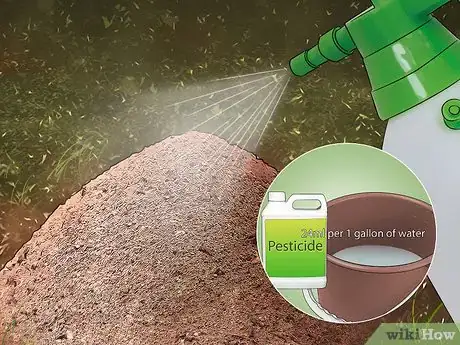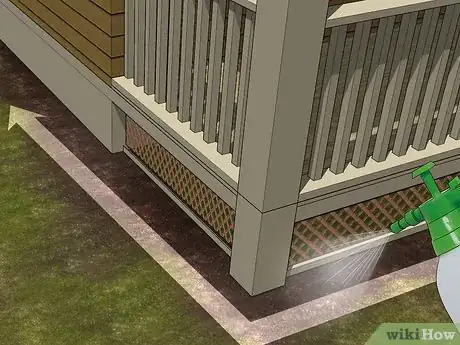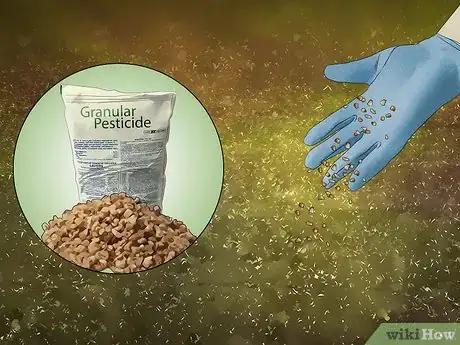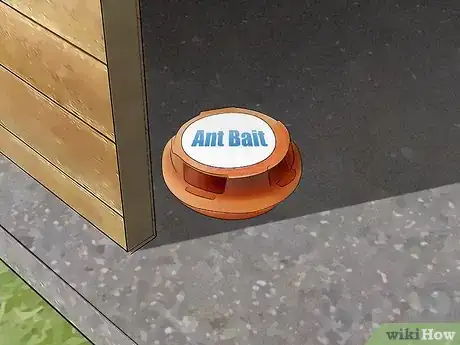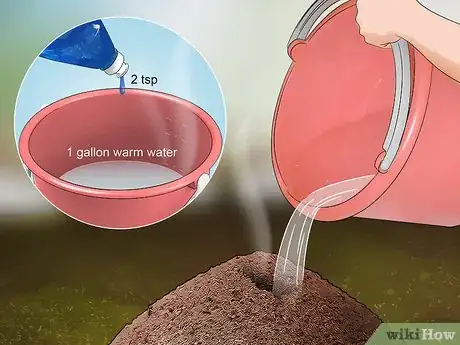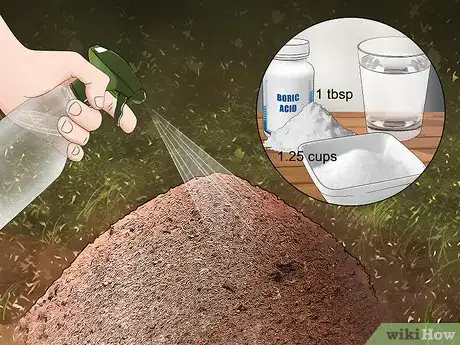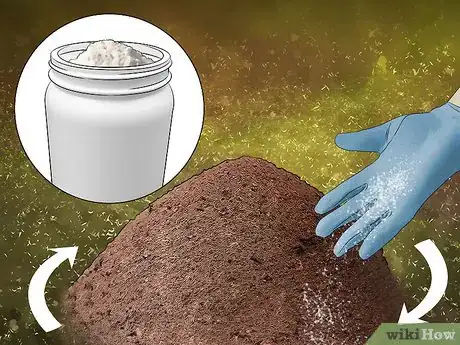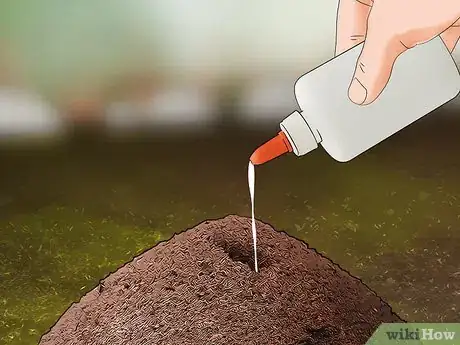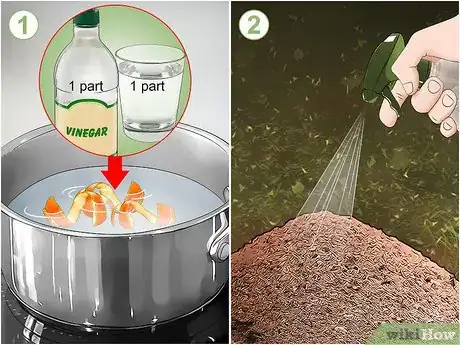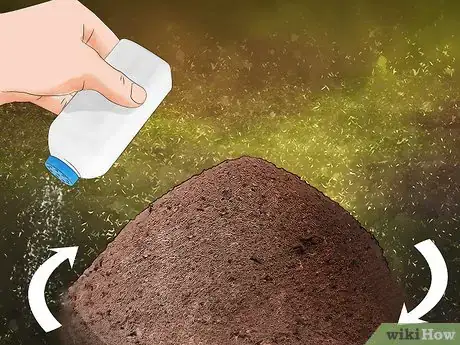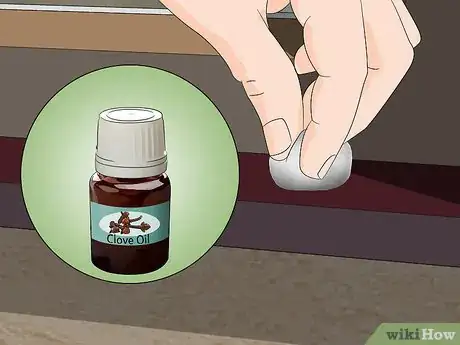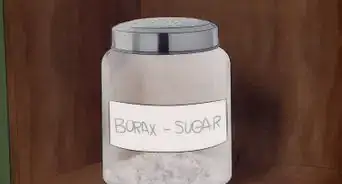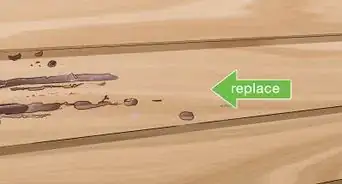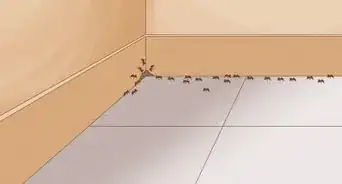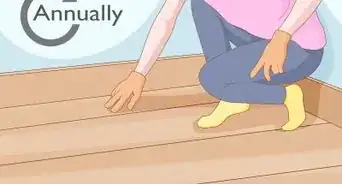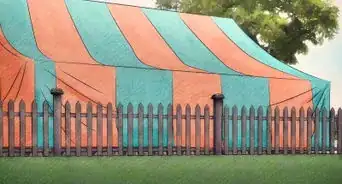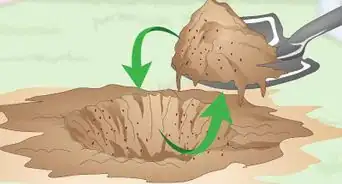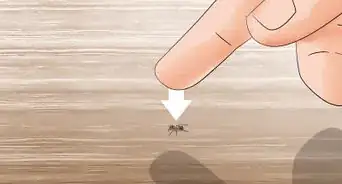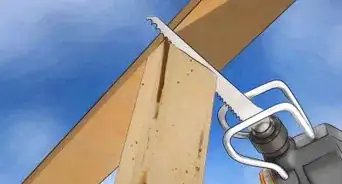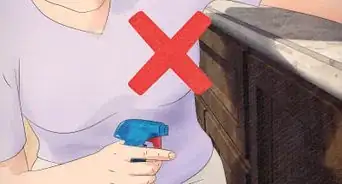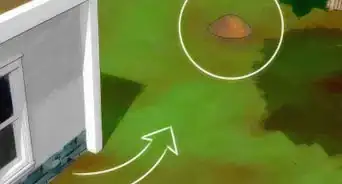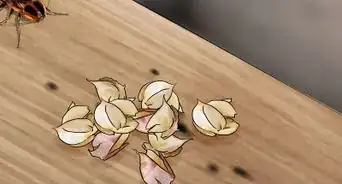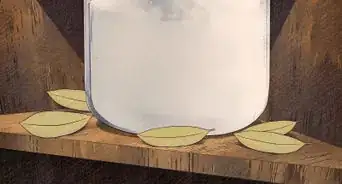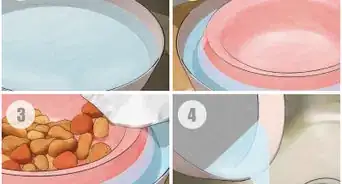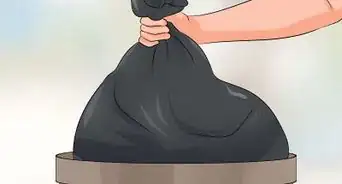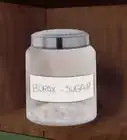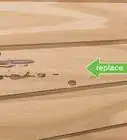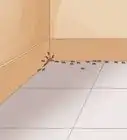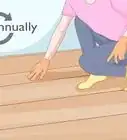This article was co-authored by Kevin Carrillo and by wikiHow staff writer, Hunter Rising. Kevin Carrillo is a Pest Control Specialist and the Senior Project Manager for MMPC, a pest control service and certified Minority-owned Business Enterprise (MBE) based in the New York City area. MMPC is certified by the industry’s leading codes and practices, including the National Pest Management Association (NPMA), QualityPro, GreenPro, and The New York Pest Management Association (NYPMA). MMPC's work has been featured in CNN, NPR, and ABC News.
There are 15 references cited in this article, which can be found at the bottom of the page.
wikiHow marks an article as reader-approved once it receives enough positive feedback. This article received 13 testimonials and 80% of readers who voted found it helpful, earning it our reader-approved status.
This article has been viewed 853,798 times.
Living with a yard full of anthills feels a lot like navigating an obstacle course, where you have to run and hop across stinging lines of ants and their unsightly nests just to get back inside. Taking back your lawn might seem like a chore, but there are lots of easy and effective ways to get rid of ants outside for good. In this article, we’ve compiled the ultimate list of ways to kill an ant colony at its source. We’ve also included tips for repelling ants and preventing them from making your yard their home. If you’re ready to get rid of your ant infestation for good, read on!
Things You Should Know
- Spray a non-repellent pesticide spray onto the anthill to kill the ant colony.
- Spread a granular pesticide across your lawn. The ants think the pesticide is food and take it back to the nest where it kills the colony.
- Mix 1 to 2 teaspoons (4.9 to 9.9 mL) of mild liquid dish soap with 1 gallon (3.8 L) of hot water and pour it into the anthill’s opening.
- For another natural solution, pour 3 tbsp (44 ml) of boric acid, 1 cup (201 g) of sugar, and 3 cups (710 ml) of warm water into lids. Set them where you see ants.
Steps
Killing Ants with Pesticides
-
1Spray a non-repellent spray on the nest to kill ants at the source. Mix 0.8 fluid ounces (24 mL) of the pesticide per 1 gallon (3.8 L) of water in a pump sprayer and cover each anthill in your yard. The pesticide kills most ants within 1 week. Non-repellent pesticides create a barrier that ants pass through so that they bring the poison back to the nest.[1]
- Always follow the specific directions for the pesticide you’re using. These are typically printed on a label on the container.
- Pay attention to where ants are coming from in your yard. They might be near your house, along a fence, or in the cracks of your pavement. Look for small mounds of dirt to find the ant nests.
- Limit spreading pesticides to every 6 months. Using too much pesticide at a time can be harmful to your health.
-
2Apply the pesticide around your home to stop ants from coming inside. Add a non-repellent pesticide to a garden sprayer. Hold the tip of the garden sprayer 6 inches (15 cm) above the ground and spray around your home’s perimeter and 1 foot (0.30 m) up onto your foundation. Spray around wire boxes, pipe connections, and any other areas you notice ants entering and exiting your home.[2]
- Spray around windows and door frames as well.
- Apply the pesticides on a day when it isn’t windy so they do not blow away from the area you’re targeting.
Advertisement -
3Spread granular pesticide across your lawn for larger infestations. Granular pesticides contain poison that ants carry deep into their nest, thinking that it’s food. Pour the bag of granular pesticide into a garden spreader and walk it across your lawn. The spreader throws the pesticide across your lawn for maximum coverage. Then, lightly water your lawn to wet the granules.[3]
- Some bags of granular pesticides have built-in shakers that allow you to spread them in concentrated areas or around the perimeter of your home.
- Keep pets and children inside for at least 1 hour to let the pesticide dry.[4]
- Mow your lawn right before you spread the pesticide so it reaches the ground.
-
4Place bait traps near your home for hands-off pest control. Set the bait traps where you notice ants entering or exiting your home. Bait traps have granules that attract ants and contain poison that kills them as it’s digested. Dispose of your old traps after 1 month.[5]
- Some bait traps contain liquid that attracts ants and traps them inside.
- It often takes several weeks for bait traps to work and kill the ant colony.
- Find bait traps at your local home and garden store.
Using Natural Substitutes
-
1Pour soapy water into the anthill to target the entire colony. Mix 1 to 2 teaspoons (4.9 to 9.9 mL) of mild liquid dish soap with 1 gallon (3.8 L) of hot water. Rake back the anthill to expose the main opening. Then, slowly pour the water into the hole of the ant nest. The hot water along with the soap kills the ants and prevents them from escaping their nest.[6]
- Pour the solution into a spray bottle for a more controlled method of dispersing the water. Use it to kill stray ants you see in your yard and home.
- Pour the water into the nest in the early morning or late at night when most of the ants are inside.
- Boiling the water is often a more effective way to kill the ants. Just use caution when pouring it around grass and plants, as it can damage or kill them.
-
2Make homemade bait with boric acid to kill the ants within a few days. Add 3 tablespoons (44 ml) of boric acid and 1 cup (201 g) of sugar to 3 cups (710 ml) of warm water; either diluted liquid boric acid or a powdered boric acid works well. This creates a sweet, poisonous mixture that attracts the ants to take the bait. Pour the mixture into shallow containers or lids and place them along trails or wherever you see ants. The ants bring the bait to the anthill to share, which in turn kills the colony.[7]
- Keep the bait stations away from your children and pets. Boric acid is toxic to humans and animals if ingested, inhaled, or absorbed through the skin. Never use it in an area where you prepare food, and wear gloves and a face mask to protect yourself while using it.
- If you spill any boric acid, wipe it up immediately.
-
3Sprinkle diatomaceous earth around the anthill to dry out the infestation. Use horticultural diatomaceous earth (DE) so it doesn’t kill your plants. Spread the DE around the ant nest as well as any trails you see in your yard. For preventative measures, sprinkle it around the perimeter of your house to keep ants outside.[8]
- Diatomaceous earth dries the liquids inside the ants and kills them within a few days or weeks.
- Wear a dust mask so you don’t inhale the DE while you spread it.
- DE is safe to keep in your yard around children and pets.
-
4Pour white school glue directly into the anthill to plug up the opening. Use a rake to clear the top of the ant hill and expose the main opening. Then, squeeze a bottle of white school glue into the nest to clog the hole and fill the nest. The glue kills the ants that get stuck inside and pushes any surviving ants to a new nest.[9]
-
5Make a repellent spray with orange peels and vinegar to steer ants away. Mix equal parts water and vinegar in a pot and drop in 2 to 3 orange peels. Bring the mixture to a boil on the stove, then turn the heat off. Let the orange peels steep in the water overnight before transferring the mixture to a spray bottle. Shake the bottle to mix the solution. Then, spray the mixture along your driveway, patio, doors, windows, and directly onto the nest to keep the ants away.[10]
- This method drives ants away rather than killing them.
- Use a blender to combine the orange peel with the water and vinegar to make a thicker solution that can kill some ants on contact.
-
6Sprinkle baby powder around the nest and along trails to repel ants. Ants tend to steer clear of talc products, especially ones like baby powder that have a powerful scent. Spread the baby powder around the nests and use a funnel to pour it directly inside. Then, spread it where you see ant trails and across entry points to create a barrier against the ants.[11]
- Use baby powder around the perimeter of your house to keep ants out.
- Chalk, baking soda, petroleum jelly, and cinnamon are other effective substances that repel ants.
-
7Rub essential oils on any points of entry to keep ants out. Essential oils like peppermint, cedar, eucalyptus, clove, and citrus help prevent more ants from coming inside. Simply soak a cotton ball in the oil of your choice and apply it around areas where ants enter your home. Repeat the process every 3 days until you don’t notice ants anymore.[12]
- Or, use essential oils to make a spray that kills ants. Dilute 15 drops of an essential oil in 1⁄2 cup (120 ml) of water in a spray bottle. Then, apply the solution directly onto any stray ants you see.
Preventing Ants From Infesting Your Yard
-
1Remove leaves, yard clippings, and tree branches from your lawn. Ants like to nest in yard debris, so they’re often attracted to piles of leaves and debris left in your backyard. Get rid of your lawn clippings by placing them in a yard waste bin for recycling, or compost them in a covered compost bin.[13]
-
2Clean up food spills and don’t leave any food outside. Ants are attracted to any crumbs and spills you make. So, make sure to take in your food when you’re done eating and wipe up any messes as soon as they happen. If you feed your animals outside, rinse and take their food bowls back inside when they’re finished eating. Be sure to store any pet food and birdseed in air-tight containers, too.[14]
- Throw away your garbage in tightly sealed bags to keep your garbage bin as clean as possible. Rinse off food scraps before you place cans and packages in the recycling, too.
- Removing an ant’s food source often makes any bait you set out more attractive, which can kill them more quickly.
-
3Store wood off the ground and away from your house. Some types of ants, like carpenter ants, like to make their nests around wood. Make sure any lumber is as far away from your house’s foundation as possible to discourage ants from making their way into your yard and home. If you have space, store wood in your garage or a covered shed.[15]
-
4Fix water leaks and holes around your house. Leaks often attract ants, while holes in your walls and foundation let them inside. Apply epoxy putty to quickly seal leaking pipes and faucets outdoors. If you see any cracks or holes around your foundation or walls, fill them with caulk.[16]
- Like all animals, ants need water to survive. So, outdoor leaks often make your yard a more suitable environment for ants.
-
5Trim back trees and shrubs that touch your house. Long branches give ants an easy and direct path right into your home. If you have bushes and shrubs planted against your house, prune them back to put distance between you and any ants. Look for any tree branches that extend towards your house and trim them off, too.[17]
Expert Q&A
Did you know you can get premium answers for this article?
Unlock premium answers by supporting wikiHow
-
QuestionWhat is the best ant killer for outside?
 Kevin CarrilloKevin Carrillo is a Pest Control Specialist and the Senior Project Manager for MMPC, a pest control service and certified Minority-owned Business Enterprise (MBE) based in the New York City area. MMPC is certified by the industry’s leading codes and practices, including the National Pest Management Association (NPMA), QualityPro, GreenPro, and The New York Pest Management Association (NYPMA). MMPC's work has been featured in CNN, NPR, and ABC News.
Kevin CarrilloKevin Carrillo is a Pest Control Specialist and the Senior Project Manager for MMPC, a pest control service and certified Minority-owned Business Enterprise (MBE) based in the New York City area. MMPC is certified by the industry’s leading codes and practices, including the National Pest Management Association (NPMA), QualityPro, GreenPro, and The New York Pest Management Association (NYPMA). MMPC's work has been featured in CNN, NPR, and ABC News.
MMPC, Pest Control Specialist Match the pesticide you use to the species of ant. There are 25 species of ants in the US, and one pesticide won't work best for all of them. Get a good look at one of the ants and do a quick Google search to see what it is. If you can't figure it out, you might want to try getting a professional exterminator to come out to get the job done.
Match the pesticide you use to the species of ant. There are 25 species of ants in the US, and one pesticide won't work best for all of them. Get a good look at one of the ants and do a quick Google search to see what it is. If you can't figure it out, you might want to try getting a professional exterminator to come out to get the job done. -
QuestionWhat can I spray for ants outside?
 Kevin CarrilloKevin Carrillo is a Pest Control Specialist and the Senior Project Manager for MMPC, a pest control service and certified Minority-owned Business Enterprise (MBE) based in the New York City area. MMPC is certified by the industry’s leading codes and practices, including the National Pest Management Association (NPMA), QualityPro, GreenPro, and The New York Pest Management Association (NYPMA). MMPC's work has been featured in CNN, NPR, and ABC News.
Kevin CarrilloKevin Carrillo is a Pest Control Specialist and the Senior Project Manager for MMPC, a pest control service and certified Minority-owned Business Enterprise (MBE) based in the New York City area. MMPC is certified by the industry’s leading codes and practices, including the National Pest Management Association (NPMA), QualityPro, GreenPro, and The New York Pest Management Association (NYPMA). MMPC's work has been featured in CNN, NPR, and ABC News.
MMPC, Pest Control Specialist
-
QuestionHow do you get rid of ants?
 Kevin CarrilloKevin Carrillo is a Pest Control Specialist and the Senior Project Manager for MMPC, a pest control service and certified Minority-owned Business Enterprise (MBE) based in the New York City area. MMPC is certified by the industry’s leading codes and practices, including the National Pest Management Association (NPMA), QualityPro, GreenPro, and The New York Pest Management Association (NYPMA). MMPC's work has been featured in CNN, NPR, and ABC News.
Kevin CarrilloKevin Carrillo is a Pest Control Specialist and the Senior Project Manager for MMPC, a pest control service and certified Minority-owned Business Enterprise (MBE) based in the New York City area. MMPC is certified by the industry’s leading codes and practices, including the National Pest Management Association (NPMA), QualityPro, GreenPro, and The New York Pest Management Association (NYPMA). MMPC's work has been featured in CNN, NPR, and ABC News.
MMPC, Pest Control Specialist To get rid of ants, you need to find and eradicate the nest. The problem with ants is that there are usually several hundred or several thousand more of them than what you're seeing. After you take care of any visible clusters of ants, make sure to apply your pesticide in other places around the area and near any entrances to your home in order to repel and kill any others that managed to survive.
To get rid of ants, you need to find and eradicate the nest. The problem with ants is that there are usually several hundred or several thousand more of them than what you're seeing. After you take care of any visible clusters of ants, make sure to apply your pesticide in other places around the area and near any entrances to your home in order to repel and kill any others that managed to survive.
Warnings
- Let pesticides dry for at least 1 hour before letting pets or children in the yard.⧼thumbs_response⧽
- Most ant poisons are toxic to humans and animals. Avoid using them in the presence of children or pets. Wear gloves and a face mask to prevent skin contact.⧼thumbs_response⧽
Things You’ll Need
Killing Ants with Pesticides
- Non-repellent spray
- Pump garden sprayer
- Granular pesticide
- Garden spreader
- Bait traps
Using Natural Alternatives
- Spray bottle
- Rake
- Liquid dish soap
- Boric acid
- Sugar
- Diatomaceous earth
- White school glue
- Orange peels
- Vinegar
- Baby powder
- Essential oils
- Cotton balls
References
- ↑ https://edis.ifas.ufl.edu/publication/IN889
- ↑ https://youtu.be/psrOctkMc5c?t=59s
- ↑ https://youtu.be/FV86suvPrGY?t=7s
- ↑ https://www.terro.com/media/wysiwyg/tr/pdf/us-instructions-t901-6.pdf
- ↑ https://youtu.be/Hyv4r0gRtVo?t=19s
- ↑ https://youtu.be/iaJkO6SXFAM?t=21s
- ↑ https://www.canr.msu.edu/news/when_ants_invade
- ↑ https://fireant.tamu.edu/files/2014/03/ENTO_009.pdf
- ↑ https://www.gardeningknowhow.com/plant-problems/pests/insects/get-rid-of-ants.htm
- ↑ https://www.mommypotamus.com/7-ways-get-rid-ants-naturally/
- ↑ https://instars-ojs-tamu.tdl.org/instars/article/view/175
- ↑ https://www.ncbi.nlm.nih.gov/pmc/articles/PMC7694179/
- ↑ https://extension.umn.edu/insects-infest-homes/ants
- ↑ https://extension.psu.edu/got-ants-eliminate-them-with-ipm
- ↑ https://content.ces.ncsu.edu/biology-and-control-of-carpenter-ants
- ↑ https://extension.psu.edu/got-ants-eliminate-them-with-ipm
- ↑ https://extension.umn.edu/insects-infest-homes/ants
About This Article
To kill ants outside, first locate the anthill where the ants are coming from. Then, pour boiling water directly into the anthill to kill the colony. Alternatively, mix 4 parts water with 1 part dish soap and pour the mixture in and around any anthills you find. Another option is to spread diatomaceous earth over the surface of your lawn. Diatomaceous earth is a natural pesticide, and ants will die when they come into contact with it. To stop outdoor ants from entering your home, apply a pesticide around the perimeter of your house. Make sure to read the label of the pesticide you choose and take necessary safety precautions before using it/ You can also place bait traps near entrances like doorways and windows. If you encounter ants outdoors, spray them with a mixture of 1 part vinegar and 3 parts water to quickly kill them. To learn how to kill ants outside with pesticides, keep reading!
